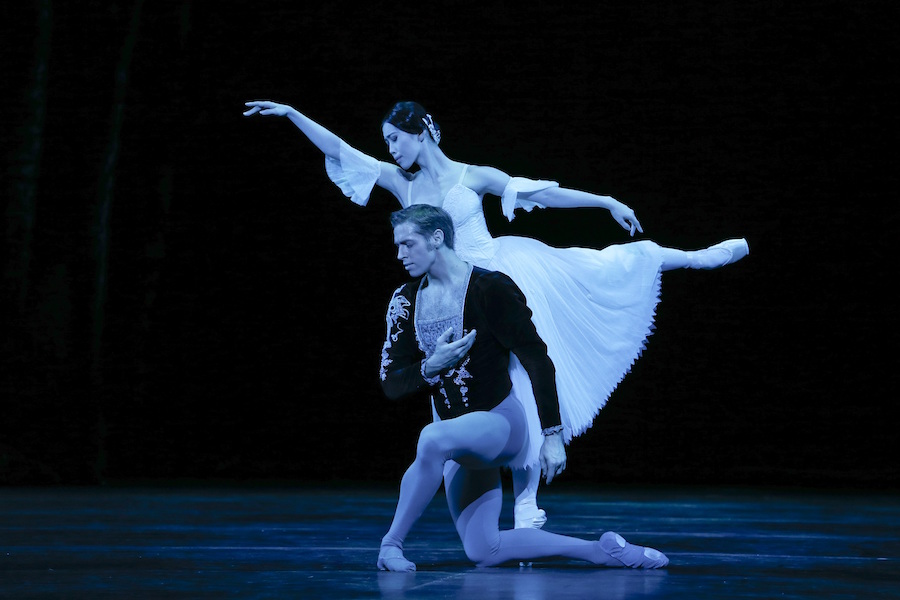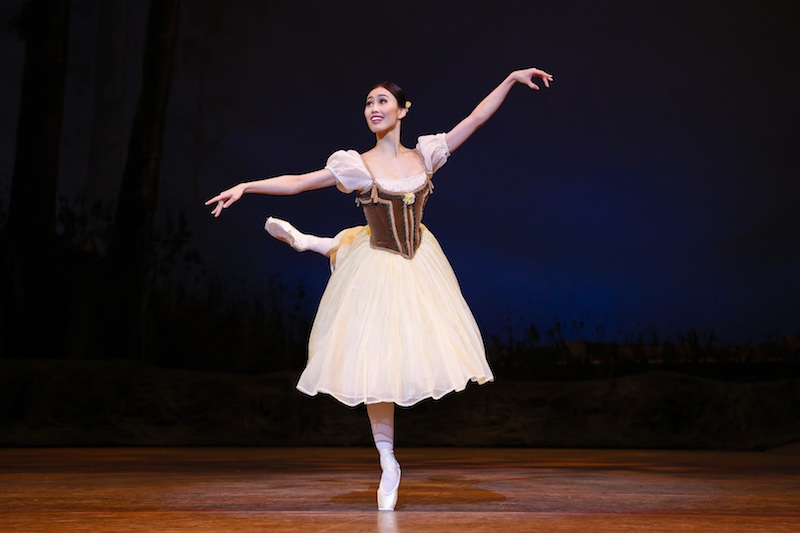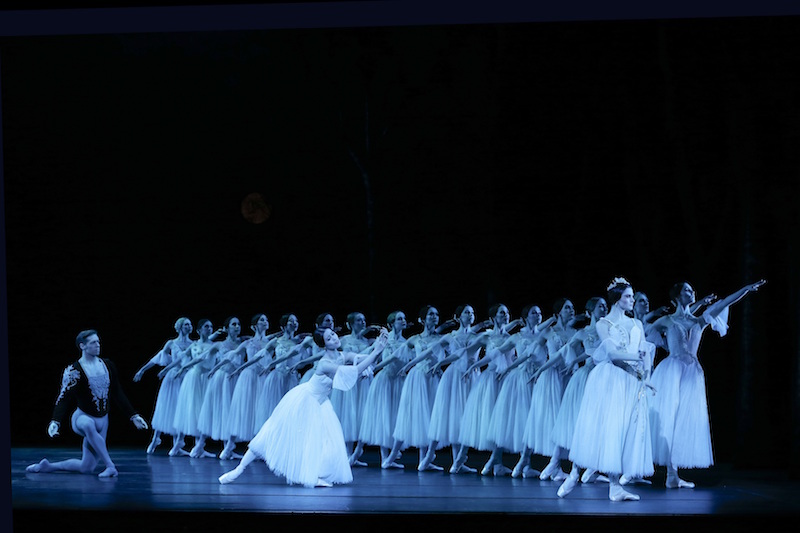Audiences have been enchanted by the story of Giselle for over 170 years. A young maid falls in love with a philandering duke, dies of madness upon learning of his duplicity, then returns as a ghost to save him from imminent death at the hands of supernatural forces. Love, betrayal, forgiveness – an emotional smorgasbord that has long dished out the goods for balletomanes season after season. And so The Australian Ballet brings the story to life once more, begging the question: why?
 Ako Kondo and Ty King-Wall. Photo © Jeff Busby
Ako Kondo and Ty King-Wall. Photo © Jeff Busby
A work like Giselle is best thought of as a long-term project – for the company, its dancers and its audiences. Of course, such a famous ballet comes loaded with history and reputation – most will remember their first time witnessing Giselle’s descent into madness or recall the magic of the wilis draped in tulle veils.
But the work also provides an opportunity for the dancers to revisit and refine the choreography; to uncover new interpretations or perspectives that lie deep within the narrative and its complex characters. A program note by arts writer Deborah Jones comments that the true essence of Giselle resides in its “style, character, musicality, dramatic coherence and emotional impact”; everything else is just the “nuts and bolts”.
Through this lens, we can appreciate why Giselle appears and reappears on our stages, and why, as audiences, we keep coming back for more. Like the dancers, we are searching for not only a connection to history – like Marius Petipa’s iconic choreography – but also a very real and very present rendering of a timeless work.
The Australian Ballet’s latest production of Maina Gielgud’s version of the ballet is admirable and offers much more than just the mechanics. The work sits comfortably on the company, but without a hint of complacency. Many of the cast have danced it before and their familiarity with the material, both technical and dramatic, pays dividends.
 Ako Kondo. Photo © Jeff Busby
Ako Kondo. Photo © Jeff Busby
On opening night, principal dancer Ako Kondo performed the role of Giselle with exquisite beauty and skill – continuing a strong season of lead performances by the ballerina. With exceptional control and articulation, she easily conquered the many challenging passages of petit allégro. Kondo’s ports de bras were also defined by such grace and fluidity that, at moments, she appeared to slow time. The ballerina’s technical capacity was complemented by impressive acting skills, ranging the full gamut from playful young lover (opposite principal Ty King-Wall as Count Albrecht) to a woman overcome by fatal madness.
Notable acting was also displayed by principal Andrew Killian, who offered a refreshingly naturalistic and believable interpretation of Hilarion – the jealous gamekeeper who loves Giselle unrequitedly.
Supporting the leads was a finely tuned corps de ballet, in particular the 18 ballerinas who carry the second act as ‘wilis’ – ghostly apparitions in Slavic folklore. While the Romantic lines of the choreography sat more comfortably on some dancers than others, the corps’ quiet pointe work and long flat arabesques convincingly shaped the ethereal world of the haunted forest. A certain sharpness to the wilis’ movement offered a satisfying counterpoint to the draping Romantic arm lines and hinted at the more sinister motives at play.
 Ty King-Wall, Ako Kondo, Valerie Tereshchenko and the corps de ballet. Photo © Jeff Busby
Ty King-Wall, Ako Kondo, Valerie Tereshchenko and the corps de ballet. Photo © Jeff Busby
Adolphe Adam’s score – laden with leitmotifs and tuneful melodies – closely accompanied the choreography. Orchestra Victoria offered a beautiful rendition of the score on opening night under the hand of guest conductor Simon Hewett (principal conductor of the Hamburg Ballet). Hewett’s direction was so precise that, occasionally, he became the arbiter of all movement and sound; simultaneously supporting and leading the action occurring both above and below the stage.
The artists of The Australian Ballet performed Giselle with fervour and aplomb, neither of which are necessarily guaranteed in a ballet that has been danced by the company for decades. But the familiarity is its strong point: an opportunity for the dancers – and, in turn, audiences – to enter the hallowed world of this famous ballet and reawaken its enduring charm.











Comments
Log in to join the conversation.